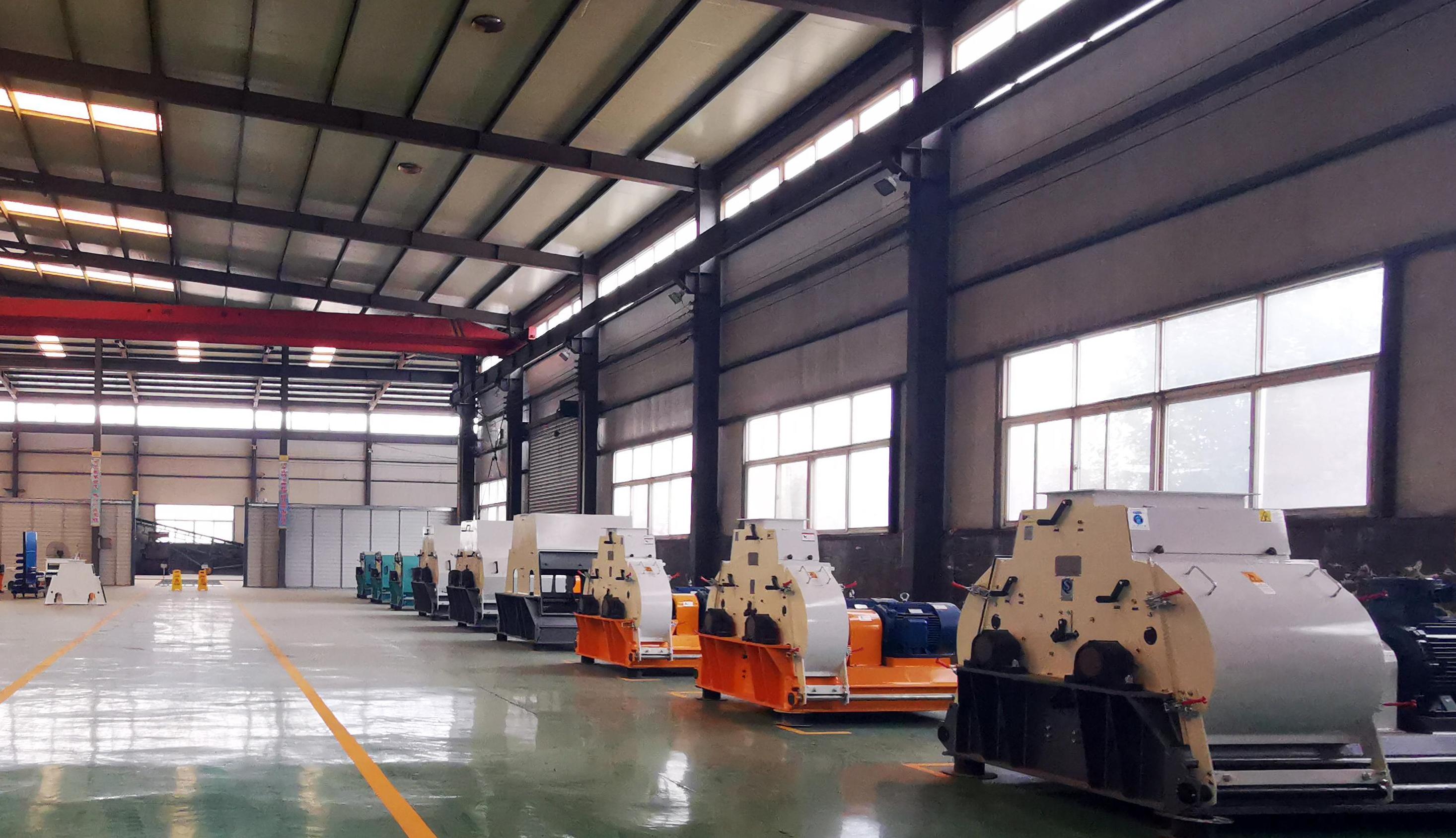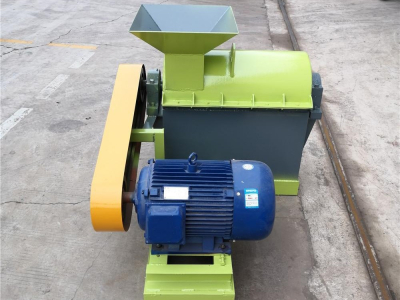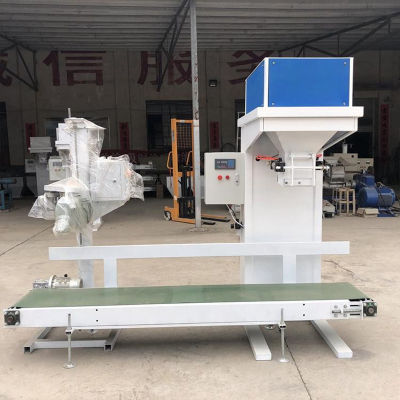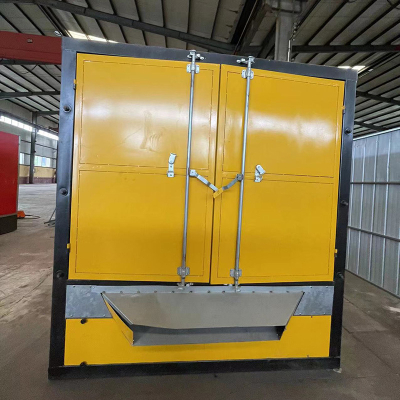Dry goods: Analysis on the problem of cleaning up the production equipment of the feed mill
Equipment cleaning is a headache for feed mills, especially for factories with busy production tasks. However, if this problem is ignored, feed products will not be able to guarantee long-term quality stability. For Dabinong, many products are high oil content, once the problem is more serious consequences.
In fact, almost all equipment needs to be cleaned after a period of use, some need to clean the outside, some need to clean both inside and outside. What we are talking about here is the part that can affect the quality of the product, mainly concentrated inside the equipment.
Because people can't see the inside of the equipment, they do not know what is inside, and do not pay attention to inspection, and are often ignored. If the production management department does not have a practical cleaning plan and persistent supervision and implementation, the equipment cleaning work is often anticlimactic. It is understood that some enterprises because there is no perfect management, and even do not know how to clean the equipment.
In this paper, according to the size of the impact of equipment cleaning on product quality, the author put forward the following equipment cleaning opinions, so as to throw a brick to introduce jade, and contribute to the formation of a relatively perfect feed enterprise equipment cleaning program.
1. Cleaning of mixer
The inside of the mixer will be covered with a layer of material after a period of use, if the oil content is high, often a shift down the accumulation of a thick layer of material, some mixers in addition to the oil injection device and liquid anti-mold agent nozzle, liquid methionine nozzle, so in the inner wall of the mixer, beside the nozzle, shaft and blade, the door will be deposited. Therefore, the general feed mill is cleaned after the end of the shift, the power is turned off before cleaning, the cleaner locks the knife, puts the key in his pocket, and takes a specially made tool to scrape down the material layer on the inner wall, the nozzle, the blade and the shaft. After cleaning up, the mixing machine bin door is opened, and the bin door and sealing ring are all cleaned up. The material cleaned down on the same day can be returned according to the quality control requirements, if the time is too long, the odor and mildew of the material can not be returned to the machine, for scrap treatment. Some mixers are relatively large, need people to enter to clean up, then the safety work is particularly important, in addition to locking, but also have special care, clean up by the person who enters the mixer is responsible for opening the lock of the power box door.
Mixer cleaning frequency: 1 -- 3d cleaning is appropriate.
2 Granulation system cleaning
The pelletizing system is composed of pelletizing machine, cooler, crusher and grading screen, of which the most need to be carefully cleaned is the modulator part of the pelletizing machine and the pelletizing chamber part. Because the steam enters the above part and the feed, it will increase the moisture, heat and viscosity of the feed, and it is easy to adhere to the inner wall of the modulator, the shaft and the blade, the pelleting cavity has a complex structure, and almost every place has accumulated material, the pelleting machine modulator is difficult to open, so the cleaning frequency is generally not high, and some feed mills and other modulators are broken down and cleaned once. In order to ensure product quality, I think it is more appropriate to clean once a week to half a month. If the shutdown for a long time, should be opened to clean, to prevent the occurrence of adhesion of feed mildew, granulation cavity should be completely cleaned after the end of each shift after the oil, in the variety adjustment, if the two varieties have cross-contamination, must be cleaned up after the next variety. After granulation, wait for the cooler to empty, enter a person from the entry hole, clean the residual materials on the four corners and screen plate with wooden sticks and other tools, and wipe the four walls; Dust and accumulation on the material level device and glass are thoroughly removed. The crusher is easy to accumulate material at both ends.
3 Cleaning of permanent magnet cylinder
The permanent magnet cylinder is demagnetized, such as iron. Iron filings have an impact on feed varieties and are harmful to equipment. Not cleaning in time may lead to equipment damage, but also may affect the passage of feed, causing blockage. It is recommended to clean up after each shift. The impurities removed from the permanent magnet cylinder are treated as waste products.
4. Clean the preliminary cleaning screen, finished product inspection screen and grading screen
The initial cleaning screen, the finished product inspection screen and the grading screen themselves are all cleaning, removing impurities and grading functions, and they are easy to jam. Especially the initial cleaning screen, when the impurity mass is large, it is easier to block, and it needs to be cleaned in time. Generally, after the end of each shift, open the screen, clean up the rope head, impurities, hard blocks, etc., keep the screen room clean, and the screen hole is not blocked. The cleaned up materials should be treated accordingly according to the actual situation, and some of them can be used.
5 Pulse bag dust collector, cyclone dust collector cleaning
Pulse bag dust collector, cyclone dust collector is a collection of dust equipment, dust is adsorbed on the surface of the bag or with the air closure transported to the bin or bag, after a long time of operation, the inner wall or outer wall of the bag will accumulate a thick layer of dust (pulse is not enough or failure is more serious), it is recommended to open the door after each shift, with a wooden stick, compressed air to clean. Cyclone dust collector is not easy to open, observe the glass observation hole every day, whether it is blocked, whether the air close does not turn, if the above problems, need to be dealt with in time, clean up the accumulation of material, tap the brake dragon with a rubber hammer, cone body, the material in the backlogged cylinder wall will be shaken down.
Under normal circumstances, the dust part of the scleron can be used, and the mouldy deterioration must be scrapped.
6 Bin treatment
Silos, including cylindrical steel silos, room and room bulk silos, silos to be crushed, silos, silos to be prepared, finished products, buffer silos, etc., are storage equipment for the reserve of a certain amount of raw materials, all the above silos need to be cleaned, but according to the loaded materials and the frequency of use, the cleaning requirements are also different.
Cylindrical steel silos, room silos, bulk silos, generally store corn, wheat, soybean meal and other granular raw materials, before the use of new silos, to enter the silo to clean the connection between the steel plate and the cement foundation or the screws, mixed strips, cement blocks left on the ground, and clean up the garbage and other debris between the discharge port and the scraper. Then the rice husk, corn has been cleaned until clean and no debris can be stored. During use, empty the silo regularly, enter the silo to check whether the silo leaks rain, clean up dead corner materials, caked materials, mildew materials, clean up and then load new raw materials. Cleaning frequency 1-2 months is appropriate.
To be crushed silo, mixing silo, to be prepared granule silo, finished goods silo are generally in the workshop, most of them are welded steel plates and assembled, square type is mostly, so in the back corner, the upper cone, the Angle iron above, the rivets will be bonded, some silo has dead corner accumulation more, this part of the material does not flow for a long time, attached to the wall of the silo, some factories use high moisture raw materials, After crushing, the hot gas is gathered on the top of the bunker, adsorbing the dust in the bunker, which is often very thick and not easy to be found, and it only attracts attention when it becomes mouldy and falls into the bunker. The above silos should be checked frequently, the necessary time and space silos should be cleaned, it is recommended to use compressed air machine to clean the residual materials everywhere, and then open the scraper or skewer to clean the residual materials, and then wash the silos with fresh raw materials, the cleaned materials and washing materials can be used according to quality control opinions.
7 Lift conveying equipment cleaning
There will normally be some material accumulation in the elevator base, the self-cleaning elevator base will accumulate much less material, and the square base will accumulate more material, so it should be cleaned up once in a while, it is recommended that the corn and wheat grain elevator be cleaned up once a week, the powdered raw materials are cleaned up once a day, and the products that cannot be cross-contaminated can be cleaned up once every change.
The bottom of the horizontal and vertical conveying equipment and the pipe wall have scraped unclean material, but the normal use of the above equipment, the material is flowing inside, only there will be material not flowing at both ends, the cleaning interval can be longer, and it can be cleaned once a month. Normal refuelling can be washed by washing the bin method, but also can be treated in the form of head and tail material. The material on the pipe wall can be shaken with a rubber hammer or blown down with compressed air.
8 Feed port cleaning
At the end of the feeding, the raw materials should be cleaned up and all enter the next process. The materials stuck on the feeding fence, the pipe wall and the weighing bucket should be cleaned up every once in a while, and can be cleaned up once a day, at least once in 3d.
9 Liquid adding equipment cleaning
Oil tank, molasses irrigation, liquid anti-mildew agent irrigation and its attached spray pipe, pump filter, nozzle, etc., should be cleaned regularly, oil, molasses, liquid methamphetamine and other raw materials are relatively easy to deteriorate, so it is very important to clean up once in a certain time, according to the characteristics of these raw materials and weather, storage conditions and other factors on the impact of these raw materials to develop a sound cleaning plan is very important. It is recommended that liquid adding irrigation, tanks and pipes, pumps, etc. be cleaned every 3 months in the fourth quarter, and every 1-2 months in the second and third quarters. The cleaning of the oil tank is relatively difficult, if necessary, it should be cleaned with hot water and dishwashing liquid, caustic soda, molasses, liquid methionine, and liquid mildew prevention agent can be basically washed. The cleaned equipment should be put in a clean cleaning solution and let dry before use.
10. Clean up other equipment sites of feed mill
The feed mill is full of dust, and each equipment may be glued to dust, raw material dust, oil, water and other substances, so the equipment not listed in this article is by no means need to be cleaned, such as the crusher, which also needs to be cleaned regularly. In addition, the dust and powder on the ground, walls and Windows of the feed mill affect the quality of the product, and will be brought to the feed mill if you are not careful, so the cleaning of the place is also crucial.
Closing remarks
As mentioned above, the equipment in production basically needs to be cleaned, and the author lists most of the equipment here, highlighting the necessity of cleaning these equipment and the conventional cleaning methods. However, in actual work, due to problems in the arrangement, many devices have not been cleaned up in time, resulting in unstable product quality, continuous complaints, and it is very difficult to find the cause. Therefore, enterprises must pay attention to this problem, require the production department to cooperate, formulate a practical equipment cleaning plan, track the cleaning process, do a good job of cleaning records, implement the equipment cleaning work to the reality, and produce qualified products with stable quality.





